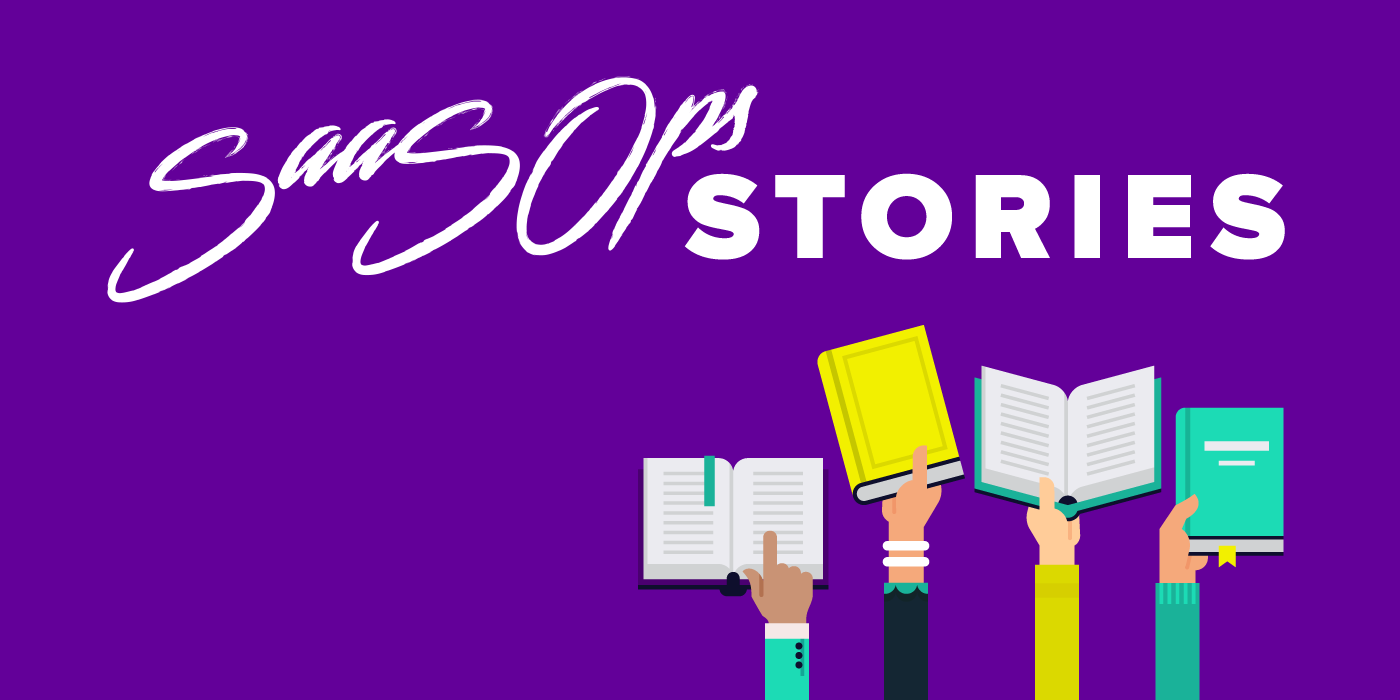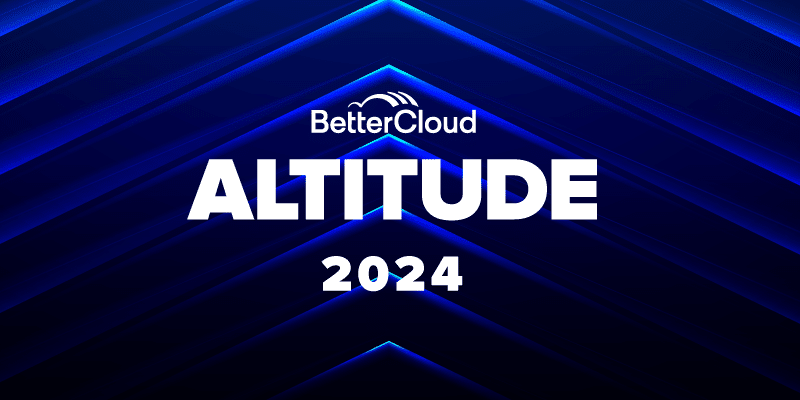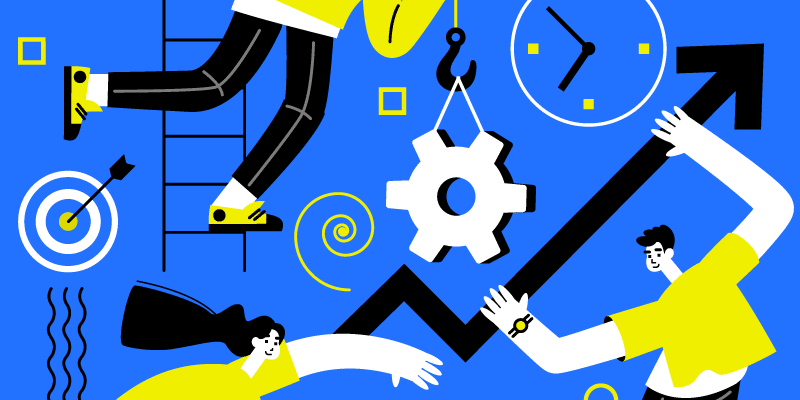SaaSOps Stories With Joseph Fuller, Head of IT at Deputy
August 11, 2020
7 minute read

Joseph Fuller is the global head of IT at Deputy, an all-in-one workforce management solution that simplifies employee scheduling, timesheets, tasking, and communication. A large portion of Deputy’s clients are retail and hospitality businesses—and many of them were impacted directly by the COVID-19 pandemic.
Our Chief Customer Officer Rachel Orston sat down with Fuller to discuss the pandemic’s impact on Deputy’s customers and employees. They dove into how Fuller’s team pivoted to support its remote workforce from a technical standpoint, as well as the adjustments he made to his management style over the last few months.
Editor’s note: This conversation has been edited lightly for clarity.
How prepared were you and your team when things changed this year?
Looking back, I can say we were very prepared for this, but only because I was able to index our response to some of my friends and peers at other companies around the world. We’re also unique in that we’re entirely SaaS-based and didn’t have a lot of overhead in the legacy environment that I know a lot of other people probably have.
Still, I probably undersell how intense those first few weeks were for me and some of my peers in the business, especially since we had to build a pandemic response plan. But I think my team did an awesome job, and I’m so proud of them.
There were a lot of sleepless nights and we had a lot of rocky internal things to get through, but we ultimately made sure we had the right infrastructure in place. Part of that does come down to our overall strategy of offering best-in-breed solutions to problems, but that doesn’t necessarily mean one solution. That might mean two, or more, but we were able to scale and provide solutions when one didn’t fit.
Reflecting on the past few months, did anything surprise you or catch you off-guard?
I would say that I’ve done business continuity planning before, but I wasn’t prepared for something like this. When we thought about a pandemic, we always planned for it to hit one city. There wasn’t a tabletop exercise in which every city on the planet felt the impact.
Like many companies, we didn’t really think through logistics. I remember sitting there after work that day. I was having a few beers with some coworkers as one does in Sydney on a Friday, but it looked like a disaster movie. People were rushing out of the office with whatever keyboards and mice they could carry. There wasn’t smoke or fire, but it looked like everyone had just robbed an office.
The interesting thing about shutting a city down is that MacBooks, for example, don’t know there’s a pandemic. So they started failing, or people would have slightly more minor issues with keyboards, and we realized that this was a real problem. So we’ve had to make some really interesting strategic pivots to support work from anywhere or on any device.
Did you allow employees to expense things like mice and keyboards? Or did you come up with some sort of approval process?
We ended up giving employees two stipends to furnish their home offices. The first time we did it, we were totally unsure how long this would last. So we allowed them to expense their Internet costs and make reasonable purchases.
We gave them sort of an open-ended budget, but also provided some guidelines. I urged people to prepare to be out for at least three to six months. I wanted people to be thoughtful about their purchases. You don’t need to buy a Bluetooth speaker because you want a party speaker. Make sure you’re thinking about things like a desk chair.
A lot of our employees have several roommates, so it was difficult for them to find a private place to take calls or to work from. When we realized this wasn’t ending anytime soon, we decided to offer another allowance for things to further improve the home office.
That’s great. And I’m assuming people are still working remotely?
We’re all remote through the end of the year globally. That has its own unique challenges. We need to make sure that people who can’t work remotely have a safe and clean space to work. We have some people that just simply can’t; they’re in a smaller house, for example, or they have kids and it’s hard for them to get any work done.
So we’ve maintained a very, very limited number of office spaces and have a bit of a hot desk scenario. We also leverage places like WeWork that can do a better job at cleaning than in other cities where we don’t have major offices anymore.
Interesting. Do you feel like you’re still focused on some of the core challenges you wanted to go after this year? Or do you feel like some of that has been derailed?
I’ve got two answers. One’s from the business’ perspective and one’s from my team’s perspective.
The business perspective is interesting because around two-thirds of the world’s workforce consists of hourly or shift employees. And because of that, we can identify micro and macroeconomic trends based on when companies in certain industries start scheduling shifts again—and a huge portion of our customer base was just decimated by this whole pandemic.
So while we saw a lot of those industries put things on pause, we saw a massive increase in velocity around things like healthcare. A lot of COVID call centers are popping up throughout the world, just to name one example. So the product has pivoted to ensure that we’re adding relevant functionality to those particular industries that we weren’t initially focused on.
How about from your team’s perspective?
We have a whole swimlane in our sprint board that’s just COVID projects. We were days away from signing a big contract with an AV vendor to rehab the cafe space that we had to put on pause.
So a lot of the physical infrastructure work stopped, but projects around how we manage identity management have suddenly become a top priority.
Now we’re really focusing on moving more things behind SSO. As soon as we went remote, we had a lot of interesting support tickets come up around things like forgotten login credentials.
Most of our days require us to do work to enable us to, well, do work. And so it’s my job to make sure we remove a lot of those hurdles for our employees. On that note, we’ve also been really laser-focused in helping our support team build new and better systems to cope with that particular influx of the business right now.
A year from now, what do you think your ideal IT employee experience looks like? Or what does the roadmap look like?
I would love for my team to not have to go into any admin panels for any of the SaaS tools that we use. I would love for them to manage everything either via BetterCloud or Okta and orchestrate all this busywork that they get stuck doing.
I also want to streamline the onboarding and offboarding experience. I think we’re 100% better than we were a year ago, but we’ve got a long way to go. Additionally, I think there’s room to automate a lot of things. As much as I love talking to our people, I feel like it’s wasting time to be like, “Hey, can you please ask your manager to approve this?”
Ultimately, I want computers to do more of our jobs for us so that my team has more time for meaningful work that requires human thought. Resetting passwords and providing logins are tasks that computers should be doing in 2021.
Do you feel like you’ve had to adapt some of your leadership styles to keep things running smoothly?
I often joke that after living in Sydney for so long, I’ve been remote for years. So I’m quite used to things like video conferencing and I’ve always kind of been a lone ranger. But what’s interesting is a lot of my team hasn’t gone through that experience. We usually sit in our little pod and it’s very easy to say, “Hey, quick question for you. What are we doing about this?”
I originally started out with having check-ins every day. We already had weekly meetings to talk about what everyone’s working on, but we recently added daily standups. I think those started to just get exhausting because things didn’t change so much that we necessarily needed to think about it. I also didn’t think about how exhausting it is to chat about everything.
With everyone remote, I’ve had to make my team aware that it’s fine if they want to go for a walk in the middle of the day. We work in so many time zones and it can lead to this neverending day. So we’ve had to come up with some better ways to manage mental health and that personal wellbeing.
I’d love to hear any things that you’re doing with your team just to maintain their energy and motivation.
We have a three mistake rule. If you make three mistakes when you’re working on something, put it down and walk away for 20 minutes because you’re not paying attention. And I do it all the time. I’ll click something or I’ll load the wrong thing and I think to myself, “I’m obviously not on this.”
So it’s been really important to create a safe space to make mistakes. It can feel like you have the weight of the world on your shoulders sometimes, especially in IT.
And the reality is that people expect you to make mistakes. They expect you to be human, too. So we’ve gone out of our way to make it OK for them to be imperfect.
I also think there’s a lot of value in taking breaks throughout the day. We have a very young workforce and they’re used to that instant chat kind of response. And so we’ve had to manage that gracefully by saying, “Hey, the team is out for lunch.” I’ve actually threatened a couple of people with disabling their email account for a couple of hours to get them to go away for a bit.
That’s great advice. One final question: What is the one thing that you can’t wait to do when everything is back to some kind of normal?
It sounds really lame, but probably travel. I was really used to going back and forth to the US twice a year and other places, so you don’t realize how much of that really is a part of you until you can’t do it. So I’m most looking forward to being able to go home for the holidays and see my family and friends.
Second to that is probably just doing things face-to-face again. As great and as thankful as I am for video conferencing, it can never replace an in-person interaction. We’re all doing these weird hygienic elbow bumps with masks and I’m looking forward to being able to hug someone.
Want more insights on how you can support a remote workforce in constantly changing times? Check out this recent conversation our CEO David Politis had with Dropbox’s CTO Bharat Mediratta.
Have a story you’d like to share with us? Send us an email here.






